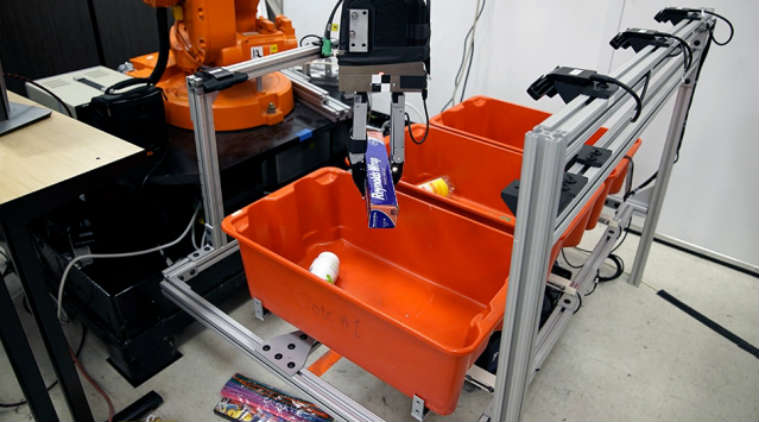Researchers Develop Robot System That Can Sort And Pick Objects
A robotic system has been designed by scientists that can help in sorting and picking undertakings, such as arranging items in a storehouse to clearing remains from a calamity area. The “pick-and-place” method includes a customary industrial robotic arm that the team equipped with a suction cup and custom gripper.
Researchers from Princeton University and Massachusetts Institute of Technology designed an “object-agnostic” grasping algorithm that allows the robot to look at a container of random items and find out the suitable approach to hold or suction onto an entity from the muddle, without having to be familiar with anything concerning the item prior to picking it up. After grabbing the item successfully, the robot picks it up from the container.
Pictures of the item from several angles are taken by a camera set. Further with the assistance of image-matching algorithm, images can be compared by the robot of the picked items with a collection of other images to discover the closest equivalent. Thus, the robot recognizes the item this way and then puts it away in a distinct container. The “grasp-first-then-recognize” methodology is followed by the robot.
The research team is functioning to develop robots as more adaptable, intelligent pickers, and flexible, for formless locations such as retail depots, where a picker might over and over again come across and have to sort numerous novel items on a daily basis, often from dense muddle. This new design is anchored on 2 common processes: picking (the act of grabbing an item successfully) and perceiving (the capability of identifying and categorizing an item, once grasped.
The team taught the robotic arm to grab novel items out from a muddled container, using any 1 of 4 key grasping actions: grasping the item vertically similar to the pincer in an arcade game; suctioning onto an entity, either from the side or vertically; or, for things that recline flush aligned with a wall, holding upright, then using an flexible spatula to glide between the item and the wall.
Images were shown by the team to the robot of bins muddled with items captured from the vantage point of the robot. Then, they demonstrated the robot with items which were graspable and which were not, scoring every instance as a failure or success. This was carried out for numerous examples, and eventually, the team developed records of picking failures and successes.
Then they integrated this collection into a “deep neural network,” which allowed the robot to match the existing difficulty it confronts with a successful result from the past, derived from its library of failures and successes.

